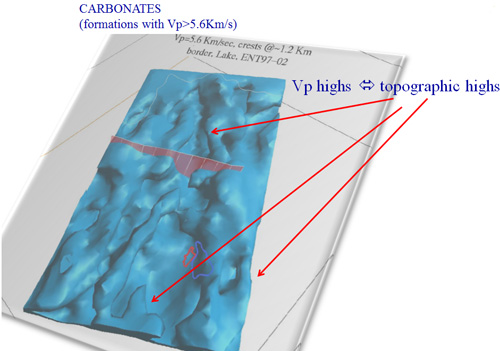3D seismic tomography images at a fraction of the cost of 2D conventional seismic
Passive Seismic Tomography (PST) is a new revolutionary geophysical exploration technique utilizing the natural microseismicity, (microearthquakes with magnitudes of -1 up to 2.0 Richter) which occur almost everywhere, as seismic sources and a portable specially designed network of seismometers on the surface to record continuously for a period of a few months.
LandTech was the first company which introduced the method of high resolution passive seismic tomography for hydrocarbon exploration at a local scale, back in 1998. In addition to the specific hardware it has designed new inversion algorithms and neural network or fuzzy procedures for the reliable processing of the acquired passive data.
After determining the hypocenters of microearthquakes we use them as seismic sources embedded within or below the target of interest and perform 3D seismic tomographic inversion of the P- and S-wave travel times to the surface recorders.
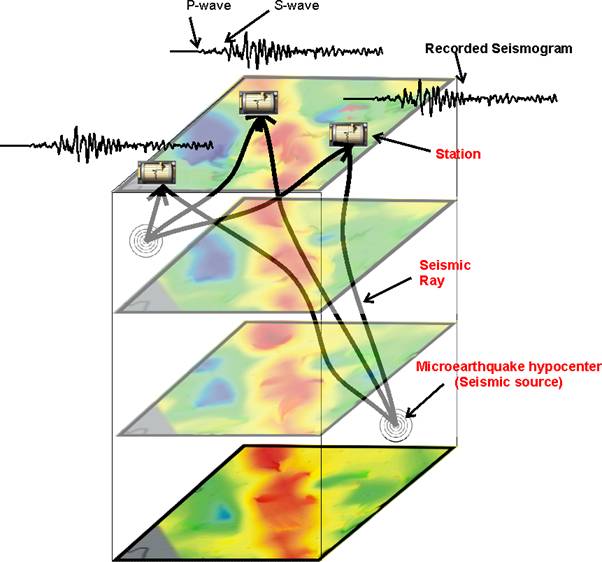
Since the seismic sources are below or within the target of interest we do not have a two wave travel of the seismic wave (in conventional seismic since the source is at the surface the seismic wave has to travel down and then up) but only one seismic ray path from the source to the surface, so this technique is specifically suited for regions of bad penetration problems (thrust belts, heavy weathered surface layers etc.).
By modifying the 3D velocity model and the seismic ray paths and minimizing the difference between theoretical and measured travel times at the surface we end up with an accurate 3D velocity model.
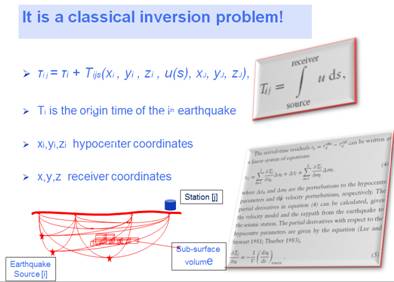
We can also measure the arrival times of S-waves, as well as other parameters too, that determine the attenuation of the medium (i.e. seismic amplitudes or first seismic pulse widths). LandTech has developed special algorithms to automatically detect the P- and S-wave arriving phases.
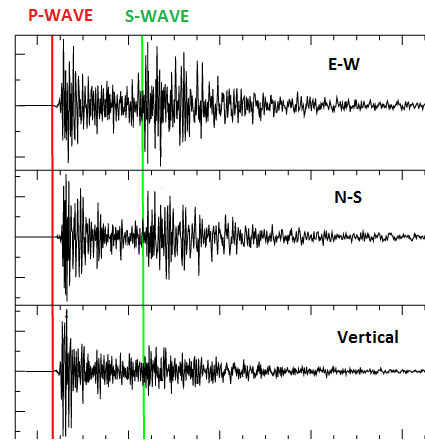
Thus Passive Seismic Tomography can give as a 3D image of P- waves, S-waves, Poisson's ratio and Quality factor (Q) or attenuation of the medium.Passive Seismic Tomography is the only technique which can provide 3D volumes of Poisson's ratio, a parameter which can indicate the presence of gas and fluids in a reservoir.
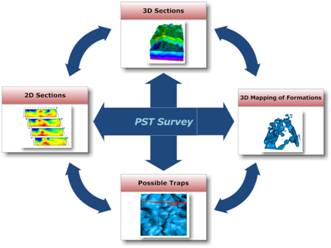
The basic steps of a high resolution passive seismic tomography survey are depicted in below
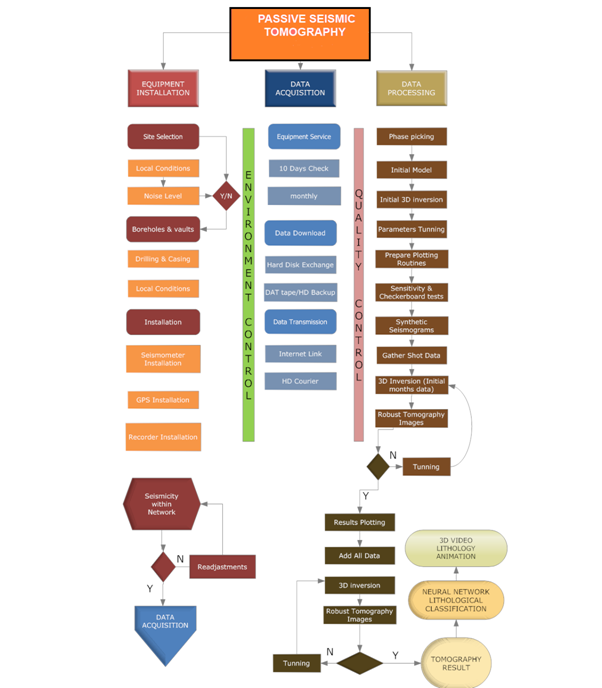
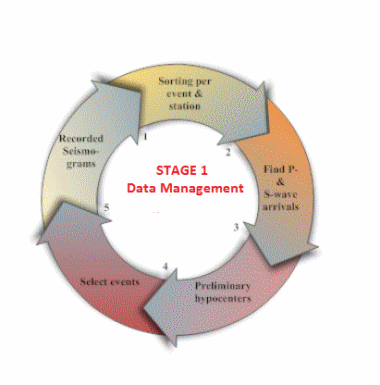
- The first step is data selection. It is important to use microearthquakes whose hypocenter locations are determined by the available data. This will not be a problem for a well designed seismic network.
- Determine the initial velocity model for the 3-D inversion. In order to construct the initial model, we will make use of all existing information. It will depend on the nature of the target area (i.e., the presence of strong lateral velocity discontinuities), whether to use a 1-D model or a two-sided model. In any event, the available geologic and seismotectonic maps, the seismic profiles (if available) and the initial 3-D models will lead us in this choice.
- Gather all data relative to the sources. That is separate the measured arrival times per earthquake and per station.
- Run the 3-D inversion on the initial data set and carry out the initial and first tuning of the parameters.
- Prepare all the plotting routines that will be needed in order to represent the resulting model adequately. (We generally use the public domain GMT package).
- Run the QC-sensitivity tests with synthetics. These include, for example, the checkerboard test.
- Run LandTech’s specially designed tomographic inversion algorithm with the final data set. This run, in reality, is an ensemble of runs in which the initial model can be changed from run to run and the data set can also be changed to verify the robustness of the tomographic images.
- Apply LandTech’s neural network based lithological assessment algorithm
- Plot the results: plan view maps at different depths, cross-sections, 3-D plots, plots of the residual times before and after the 3-D inversion. Plot the mean station residuals and their standard deviation.
- Perform the 3D animated video visualization analysis.
Click here... to see an example of a 3D Vp velocity structure below the whole of an exploration block obtained by LandTech’s PST method
Benefits
The benefits of Passive Seismic Tomography are substantial:
Operational
- It can be applied to the most mountainous and difficult terrains (rain forests, swamps etc.) since we only have to install single seismographs at points spaced a few Km apart and there is no need of dense geophone layouts.
- There is no need of explosives, vibroseis etc. since we use the natural microseismicity as seismic sources.
- No day-to-day operations etc.
- No permits required.
Technical
- Provides 3D geological detail beneath the entire exploration block no matter how big and accessible is (even many thousands Km2).
- Ideal for regions with seismic penetration problems such as heavily weathered surface layers, basalt barriers, etc. (in Passive Seismic Tomography microearthquakes play the role of seismic sources within or below the target, so we have only 1-way ray paths, crossing the medium of interest, from the source to the sensor at the surface).
- In many cases (difficult geologies, high topographic reliefs, strongly attenuating media) provide data better than conventional seismic.
- Provides not only 3D Vp but also and Vs velocity variations beneath the entire exploration block.
- Provides 3D distribution of Poisson’s ratio which depends upon the kind of fluids in the pore space (water, gas, oil).
- We can easily obtain 2D horizontal and/or vertical sections whenever we want throughout the exploration block.
- We can get an animated 3D video of Vp, Vs and Poisson’s ratio parameters below the entire exploration block.
- We can use the 3D velocity data to reprocess conventional seismic data (post stack depth migration) and increase their resolution.
- We can get a 3D variation of the seismic attenuation (or rock quality factor) below the entire exploration block. A parameter dependent on fracturing, and the kind of fluids in the pore space.
Economic
- We can explore large areas (many thousands of Km2) at a fraction of the cost of a conventional 2D seismic.
- No need of explosives vibroseis or expensive seismic gear (e.g. cables, telemetry nodes, geophones).
- It requires only a fraction of the personnel (seismic crew) required for a conventional seismic survey.
Environmental
- 100% safe to the environment.
- No explosives, road blocking for vibroseis etc.
- Uses natural seismicity as a source.
- Ideal for environmentally sensitive regions (rainforests, national parks etc. tropical forests, swamps etc.).
- No special permits required even for environmentally sensitive areas.
Other
- Can be used in frontier geopolitical exploration areas to build a pre-project plan at minimum cost.
- Used to investigate very large areas to define places where to apply conventional seismic (better layout of seismic lines), so reduce the exploration cost.
- Provide confidence on exploration activities not only by defining an accurate geological setting but also minimizing the investment risk.
Some Examples
Accuracy
The following example shows how a PST survey using natural microearthquake seismicity can be compared to conventional seismic as far as seismic ray coverage and accuracy is concerned. In the figure below we present a simple case showing the ray paths from only 6 microearthquakes to only 11 surface stations. Imagine the resolution obtained if we use the whole of the recorded microearthquakes (usually 600-1000) and an array of many surface stations (70-100 in average). In this case many thousands of seismic rays will cross very densely the space below the exploration block.

3D mapping of geological formations even below blocks with high topographic relief
The following figure shows the mapping of an evaporitic layer below a mountainous limestone block. This result was obtained from a 3D PST data volume by isolating velocities corresponding to the evaporites.
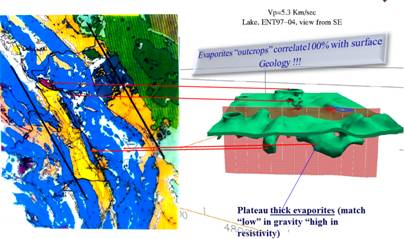
3D Velocity structure below an exploration block
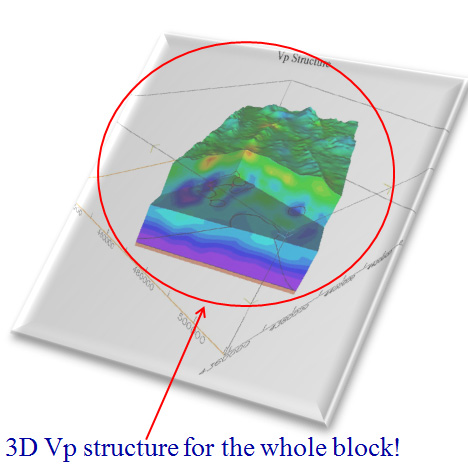
3D Vp/Vs structure below an exploration block
In the following example we show a 3D view of all Vp/Vs values >1.785 between an exploration block delineating possible hydrocarbon traps.
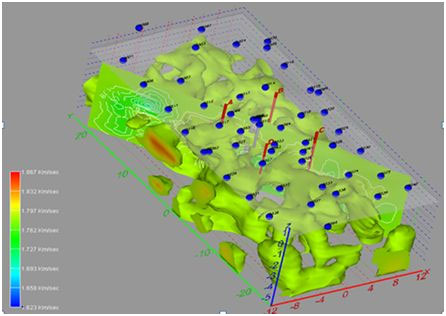
The figure below shows how Vp/Vs values can differentiate water saturated carbonates from carbonates and flysch.
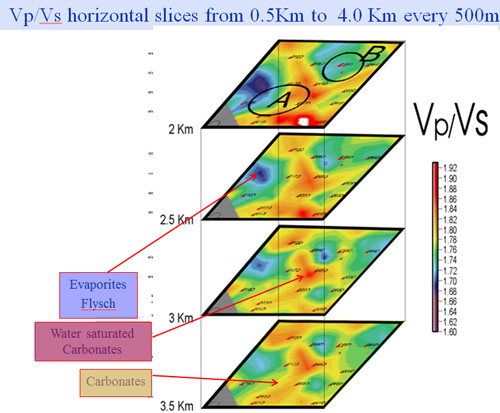
3D basement mapping below a block
